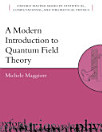Physics of Condensed Matter
Jan 2011 · Academic Press
5.0star
1 reviewreport
Ebook
688
Pages
family_home
Eligible
info
reportRatings and reviews aren’t verified Learn More
About this ebook
Physics of Condensed Matter is designed for a two-semester graduate course on condensed matter physics for students in physics and materials science. While the book offers fundamental ideas and topic areas of condensed matter physics, it also includes many recent topics of interest on which graduate students may choose to do further research. The text can also be used as a one-semester course for advanced undergraduate majors in physics, materials science, solid state chemistry, and electrical engineering, because it offers a breadth of topics applicable to these majors. The book begins with a clear, coherent picture of simple models of solids and properties and progresses to more advanced properties and topics later in the book. It offers a comprehensive account of the modern topics in condensed matter physics by including introductory accounts of the areas of research in which intense research is underway. The book assumes a working knowledge of quantum mechanics, statistical mechanics, electricity and magnetism and Green's function formalism (for the second-semester curriculum). - Covers many advanced topics and recent developments in condensed matter physics which are not included in other texts and are hot areas: Spintronics, Heavy fermions, Metallic nanoclusters, Zno, Graphene and graphene-based electronic, Quantum hall effect, High temperature superdonductivity, Nanotechnology - Offers a diverse number of Experimental techniques clearly simplified - Features end of chapter problems
Ratings and reviews
5.0
1 review
A Google user
- Flag inappropriate
June 12, 2011
The book entitled Physics of Condensed Matter by Prasanta K. Misra covers a wide spectrum of tradition and modernity in the subject. Starting from introductory topics, the book evolves elegantly to include modern and exciting topics such as spintronics, heavy fermions, high Tc superconductors, complex systems, nano-clusters and novel materials. Many of the chapters include research methodologies, which could be of interest and use to researchers in the field. It is more evident in chapters describing magnetism and semiconductors. The author has shown uncanny ability of combining lucid description of physical phenomena with the rigors of theoretical techniques. Problems at the end of each chapter are meant for innovative approach and in this respect the book provides plenty of opportunity to students for practice and perfection. The scope of the book can excite all the players in the field-students, researchers and teachers. The book thus merits a unique place amongst the books in Solid State, Condensed Matter and Materials Physics.
G. S. Tripathi
Professor of Physics, Berhampur University, India
Rate this ebook
Tell us what you think.
Reading information
Smartphones and tablets
Install the Google Play Books app for Android and iPad/iPhone. It syncs automatically with your account and allows you to read online or offline wherever you are.
Laptops and computers
You can listen to audiobooks purchased on Google Play using your computer's web browser.
eReaders and other devices
To read on e-ink devices like Kobo eReaders, you'll need to download a file and transfer it to your device. Follow the detailed Help Center instructions to transfer the files to supported eReaders.




